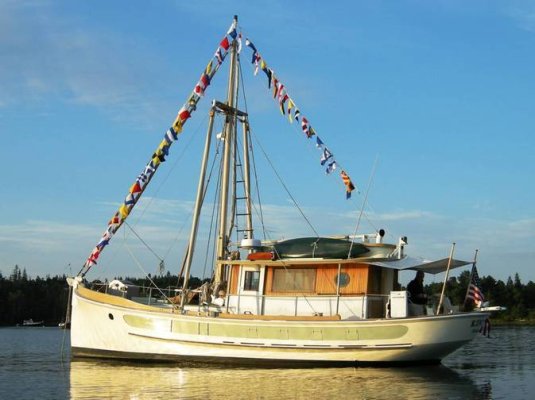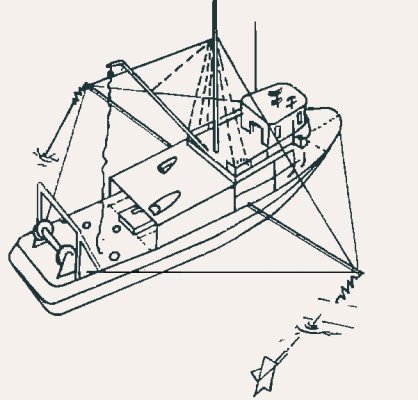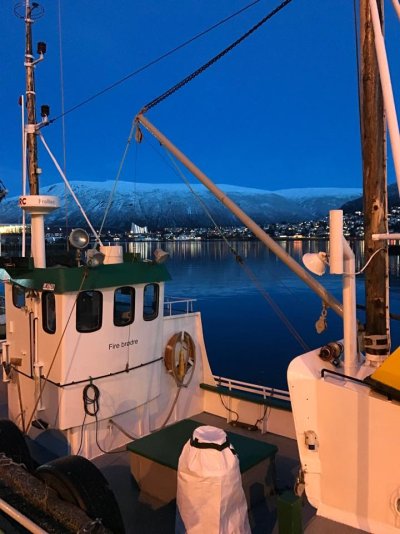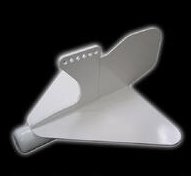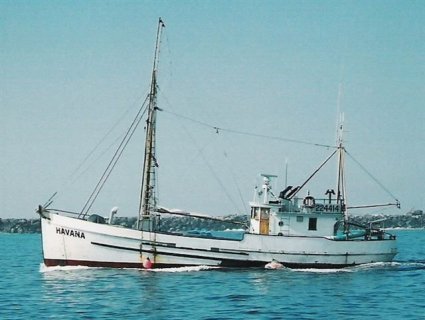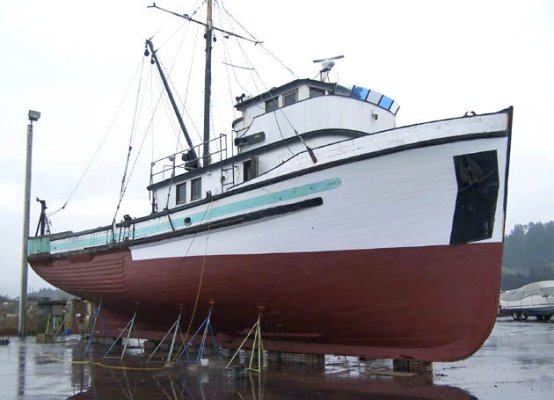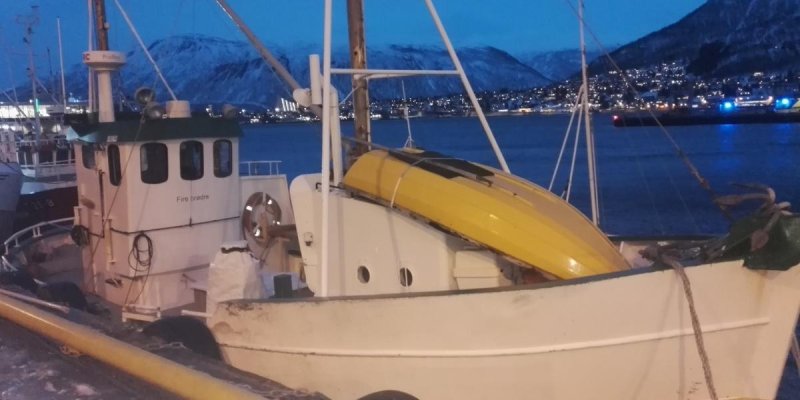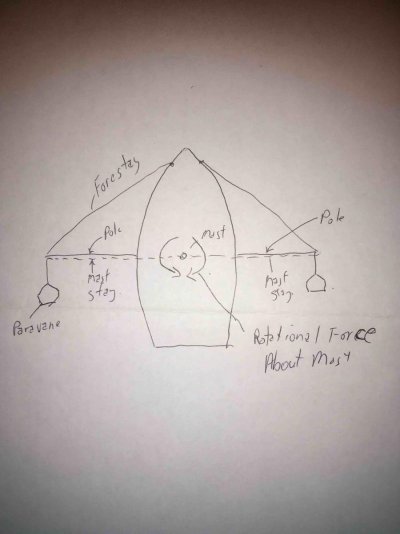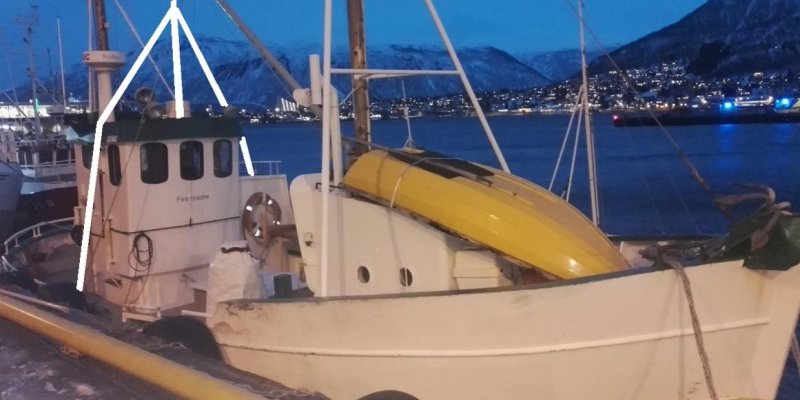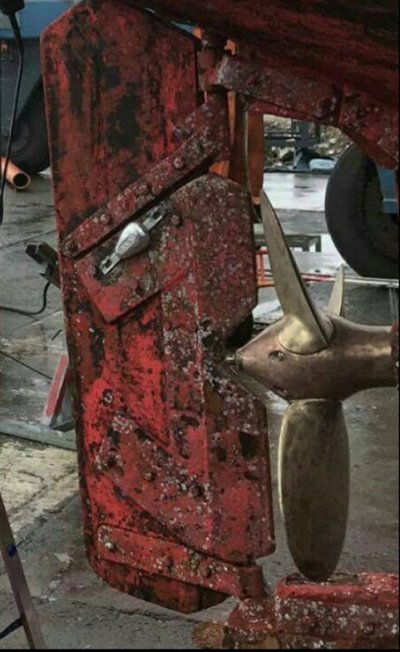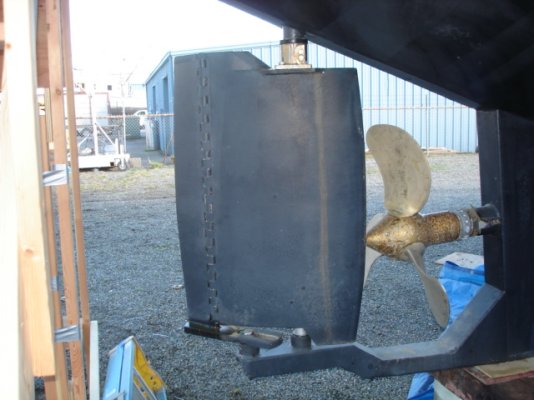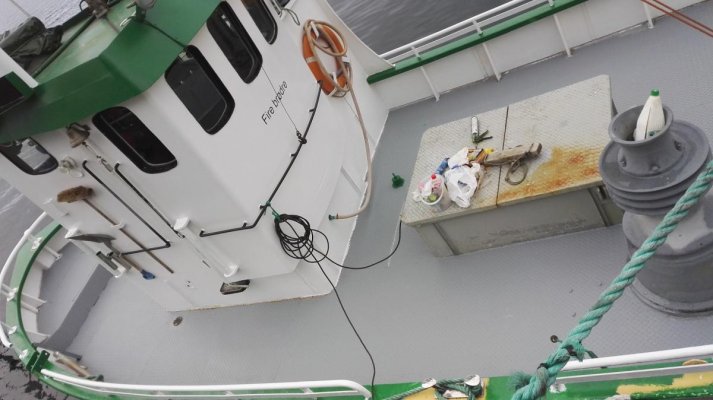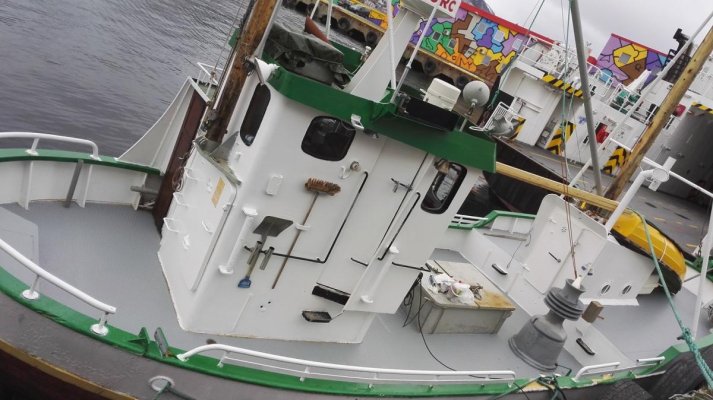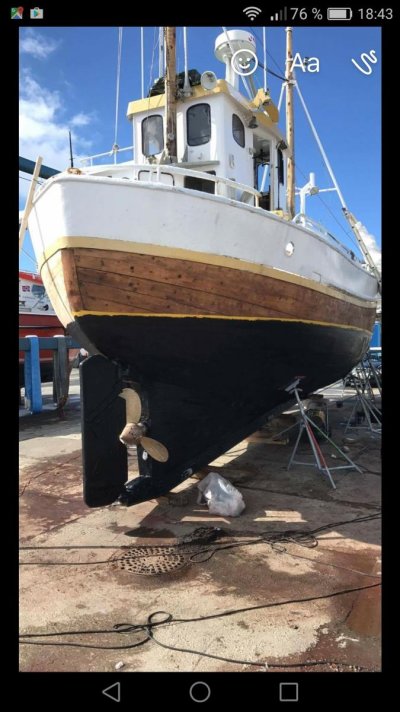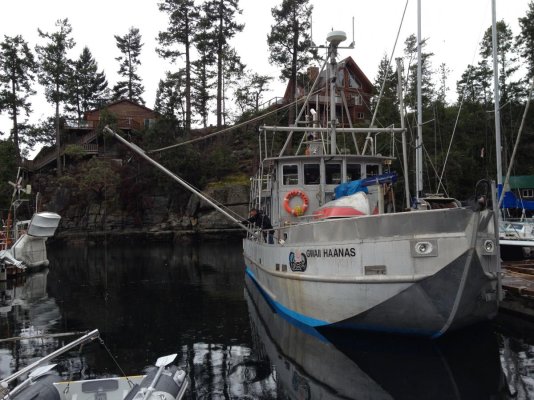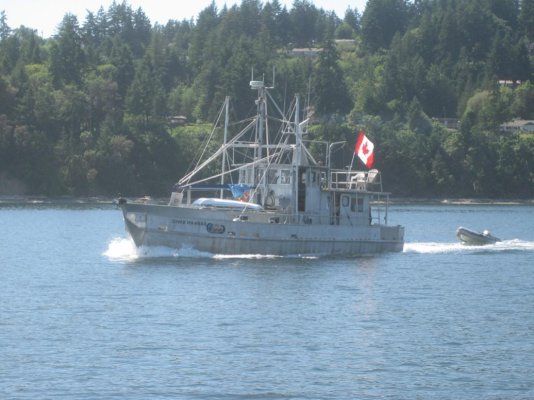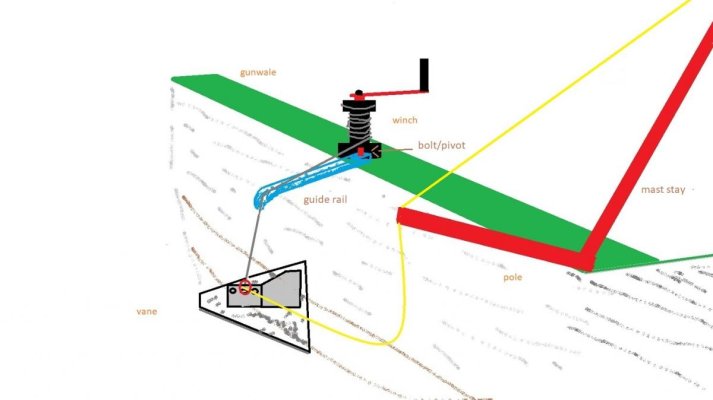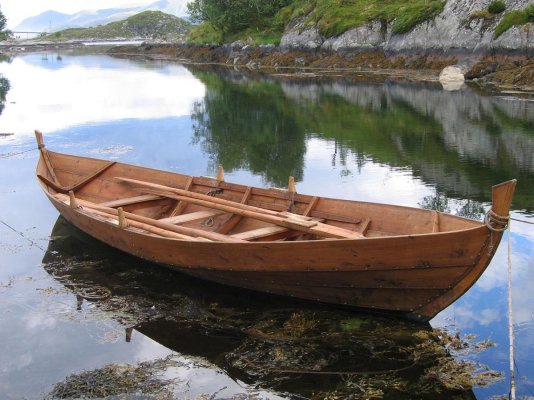Cold-smoked
Veteran Member
Hi, all. I've been reading some of the threads here regarding paravane stabilizers with great interest. It seems that most boats have the booms installed near cg(?) - or around 1/3 of the boats length from the stern.
What exactly are the negative effects of having the booms and vanes closer to the bow - apart from perhaps reduced rudder response ?
I'm asking because I found pics and illustrations of boats where the booms are closer to the bow - and also because I plan to dampen the roll on my own former FV. The easiest for me would be to install the booms near the front mast, but I realize it may not work so well
Thanks, V.
What exactly are the negative effects of having the booms and vanes closer to the bow - apart from perhaps reduced rudder response ?
I'm asking because I found pics and illustrations of boats where the booms are closer to the bow - and also because I plan to dampen the roll on my own former FV. The easiest for me would be to install the booms near the front mast, but I realize it may not work so well

Thanks, V.

